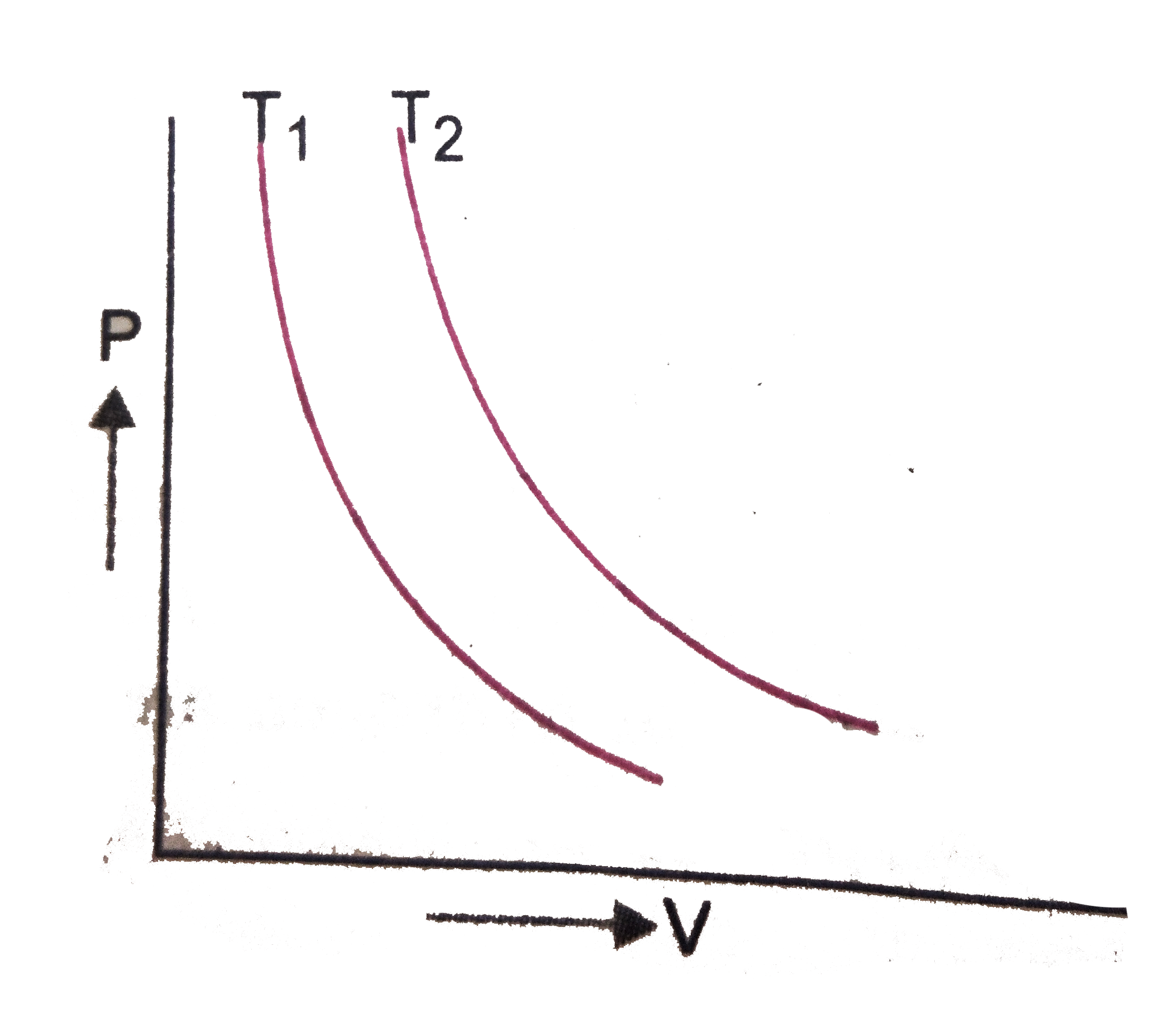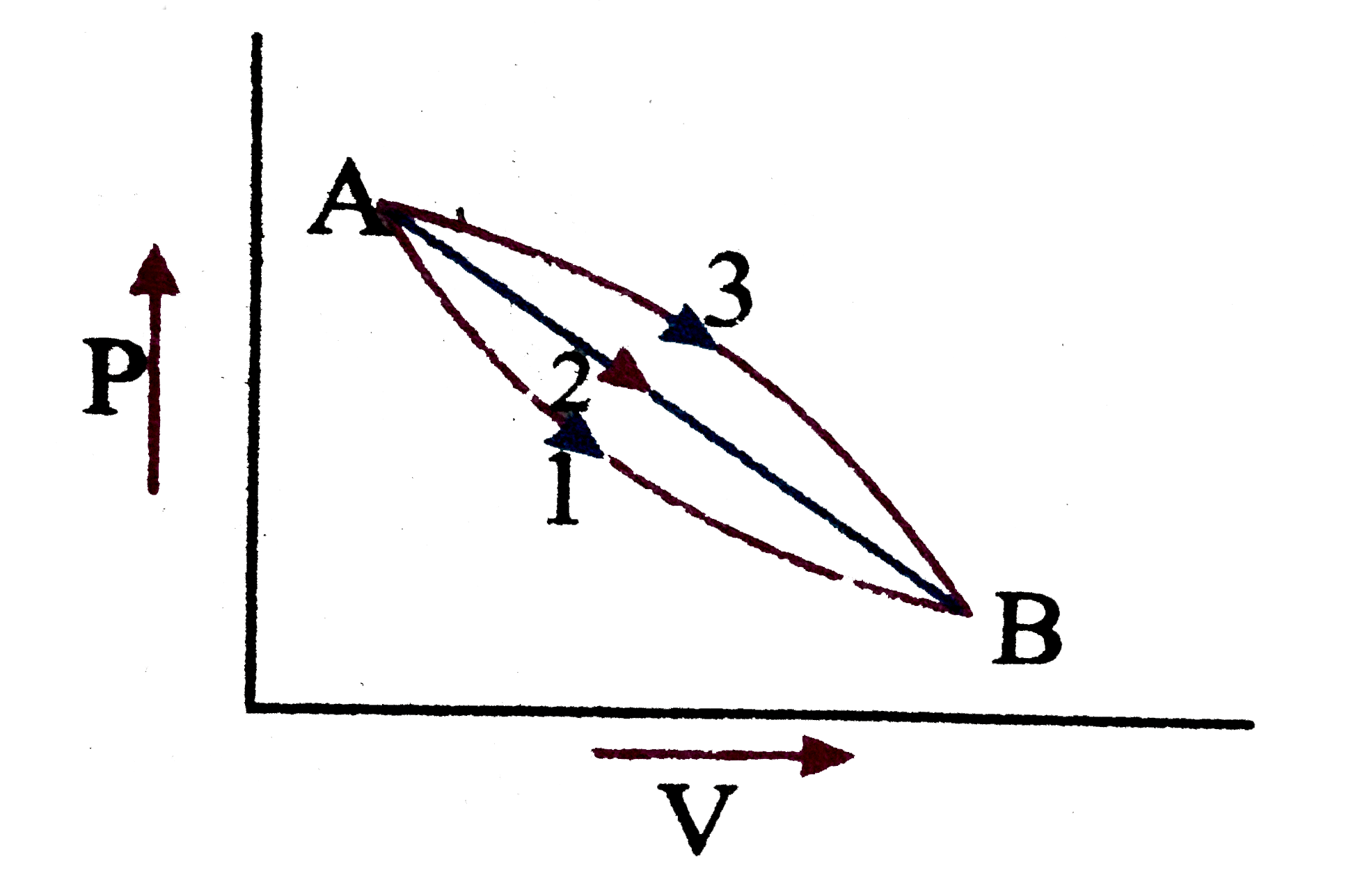Complete Solutions to C.U.Q of chapter KINETIC THEORY OF GASES of Class 11 book with complete answers and questions
| Class 11 | PHYSICS |
| Chapter | KINETIC THEORY OF GASES |
| NARAYANA | C.U.Q |
| Number Of Questions | 100 |
| Academic Year | 2023-24 |
The root mean square speed of gas molecules
View SolutionThe average kinetic energy of a molecule of a gas at absolute temperature T is proportional to
View SolutionThe mean square speed of the molecules of a gas at absolute temperature `T` is proportional to
View SolutionThe following four gases are at the same temperature. In which gas do the molecules have the maximum root mean square speed?
View SolutionThe mean transitional kinetic energy of a perfect gas molecule at absolute temperature `T` is (`k` is the Boltzmann constant)
View Solution`E_(0)` and `E_(n)` respectively represent the average kinetic energy of a molecule of oxygen and hydrogen. If the two gases are at the same temperature, which of the following statements is true?
View SolutionChoose the correct statement from the following:
View SolutionThe root mean square speed of the molecules of an enclosed gas is 'v'. What will be the root mean square speed if the pressure is doubled, the temperature remaining the same?
View SolutionChoose the only correct statement from the following:
View SolutionA vessel contains a mixture of one mole of oxygen and two moles of nitrogen at 300K. The ratio of the average rorational kinetic energy per `O_2` molecules to that per `N_2` molecules is
View SolutionWhich of the following pehnomena gives evidence of the molecule motion ?
View SolutionChoose the correct statement . When the temperature of a gas is increased
View SolutionThe number of molecules per unit volume (n) of a gas is given by
View SolutionThe number of molecules of `N_(2)` and `O_(2)` in a vessel are same. If a fine hole is made in the vessel then which gas escapes out more rapidly?
View SolutionThe mean kinetic energy per unit volume of gas (E) is related to average pressure P, exerted by the gas is
View SolutionTwo vessels have equal volums. One of them contains hydrogen at one atmosphere and the other helium at two atmosphere. If both the samples are at the same temperature, the `rms` velocity of the hydrogen molecules is
View SolutionAt a given volume and temperature the pressure of a gas
View SolutionIf the Avogadro's number was to tend to infinity the phenomenon of Brownian motion would
View SolutionThe root mean square speed of a group of gas moecules, having speeds `v_(1),v_(2),....v_(N)` is
View Solution`v_(rms), v_(av)` and `v_(mp)` are root mean square average and most probable speeds of molecules of a gas obeying Maxwellian velocity distribution. Which of the following statements is correct ?
View SolutionThe relation between rms velocity, `v_(rms)` and the most probable velocity, `v_(mp)`, of a gas is
View SolutionWhich of the following methods will enable the volume of an ideal gas to be made four times
View SolutionSome gas at 300K is enclosed in a container. Now the container is placed on a fast moving train. While the train is in motion, the temperature of the gas
View SolutionAt absolute zero temperature, the kinetic energy of the molecules
View SolutionThe average energy for molecules in one degree of reedom is :
View SolutionTwo ballons are filled, one with pure He gas and other by air, repectively. If the pressure and temperature of these ballons are same then the number of molecules per unit volume is:
View SolutionIf gas molecules undergo, inelastic collision with the walls of the container
View SolutionOn colliding in in a closed container the gas molecules
View SolutionAt upper atmosphere, an astronaut feels
View SolutionThe average distance travelled by a molecule of gas at temperature T between two successive collisions is called its mean free path which can be expressed by (P is pressure of gas, K is Boltzmann cosntant, d diameter of molecule)
View SolutionWhich of the following statements about kinetic theor of gases is wrong?
View SolutionConsider a gas with density `'rho'` and `overlinec` as the root mean square velocity of its molecules contained in a volume. If the system moves as whole with velocity 'v' , then the pressure exerted by the gas is
View SolutionAt a given temperature if `V_(rms)` is the root mean square velocity of the molecules of a gas and `V_(s)` be the velocity of sound in it, then these are related as `(gamma=(C_(p))/(C_(v)))`
View SolutionOn any planet, the presence of atmosphere implies (`C_(rms)=` root mean square velocity of molecules and `v_(s)=` escape velocity)
View SolutionA gas has volume `V` and pressure `p`. The total translational kinetic energy of all the molecules of the gas is
View SolutionIf the pressure in a closed vessel is reduced by drawing out some gas, the mean free path of the molecules
View SolutionThe temperature of a gas is raised while its volume remains constant, the pressure exerted by the gas on the walls of the container increases because its molecules
View SolutionWhich of the following statements are true regarding the kinetic theory of gases?
View SolutionWater is used in car radiators as coolant because
View SolutionOf the following specific heat is maximum for
View SolutionHeat is
View SolutionWhich of the following parameters does not characterize the thermodynamic state of matter?
View SolutionThe thermal motion means
View SolutionHeat required to raise the temperature of one gram of water through `1^@C` is
View SolutionIf specific heat of a substance is infinite, it means
View SolutionIsothermal curves for a given mass of gas are shown at two different temperture `T_(1) and T_(2)` in Fig. State whether `T_(1) gt T_(2) or T_(2)gt T_(1)`. Justify your answer.

View SolutionCertain amount of heat supplied to an ideal gas under isothermal conditions will result in
View SolutionThe temperature range in the definition of standard calorie is
View SolutionThe pressure `p` for a gas is plotted against its absolute temperature `T` for two different volumes `V_(1)` and `V_(2)`. If `p` is plotted on `y-` axis and `T` on `x-`axis, then
View SolutiondU+dW=0 is valid for
View SolutionIn a given process on an ideal gas, `dW=0 and dQlt0.` Then for the gas
View SolutionA piece of ice at `0^@C` is dropped into water at `0^@C`. Then ice will
View SolutionThe temperature determines the direction of net change of
View SolutionThe direction of flow of heat between two bodies is determined by
View SolutionHeat is absorbed by a body. But its temperature does not raised. Which of the following statement explains the phenomena?
View SolutionZeroth law of thermodynamics gives the concept of
View SolutionWe need mechanical equivalent of heat because
View SolutionIf an electric fan be switched on in a closed room, will the air of the room be cooled? If not, why do we feel cold?
View SolutionWhich type of motion of the molecules is responsible for internal energy of a monoatomic gas?
View SolutionThe internal energy of a perfect monoatomic gas is
View SolutionThe internal energy of a perfect monoatomic gas is
View SolutionWhich of the following is constant in an isochoric process?
View SolutionHow does the internal energy change when the ice and wax melt at their normal melting points?
View SolutionIn the free expansion of a gas, its internal energy
View SolutionThe internal energy of an ideal gas depends upon
View SolutionOn compressing a gas suddenly, its temperature
View SolutionWhen heat is added to a system at constant temperature, which of the following is possible.
View SolutionThe first law of thermodynamics is based on the law of conservation of
View SolutionA given mass of a gas expands from the state A to the state B by three paths 1,2 and 3 as shown in the figure, If `W_(1),W_(2)` and `W_(3)` respectively be the work done by the gas along the three paths then

View SolutionA given system undergoes a change in which the work done by the system equals to the decrease in its internal energy. The system must have undergone an
View SolutionA closed vessel contains some gas at a given temperature and pressure. If the vessel is given a very high velocity, then the temperature of the gas
View SolutionUnit mass of liquid of volume `V_(1)` completely turns into a gas of volume `V_(2)` at constant atmospheric pressure P and temperature T. The latent heat of vaporization is "L". Then the change in internal energy of the gas is
View SolutionFind the ratio of `(DeltaQ)/(DeltaU)` and `(DeltaQ)/(DeltaW)` in an isobaric process. The ratio of molar heat capacities `(C_p)/(C_V)=gamma`.
View SolutionFind the ratio of `(DeltaQ)/(DeltaU)` and `(DeltaQ)/(DeltaW)` in an isobaric process. The ratio of molar heat capacities `(C_p)/(C_V)=gamma`.
View SolutionA gas is contained in a metallic cylinder fitted with a piston.The piston is suddenly moved in to compress the gas and is maintained at this position. As time passes the pressure of the gas in the cylinder
View SolutionThe gases have two principal specific heats but solids and liquied have only one specific heat. Why ?
View SolutionWhat is specific heat of gas in isothermal changes?
View SolutionAt a given temperature, the specific heat of a gas at constant pressure is always greater than its specific heat at constant volume.
View SolutionThe ratio `[C_(p)//C_(v)]` of the specific heats at a constant pressure and at a constant volume of any perfect gas
View SolutionWhich of the following formula is wrong?
View SolutionTwo identical samples of gases are allowed to expand to the same final volume (i) isothermally (ii) adiabatically. Work done is
View SolutionWhich of the following is true in the case of a reversible process?
View SolutionThe ratio of the relative rise in pressure for adiabatic compression to that for isothermal compression is
View SolutionRatio of isothermal elasticity of gas to the adiabatic elasticity is
View SolutionThe conversion of water into ice is and
View SolutionFor the Boyle's law to hold good, the necessary condition is
View SolutionAn isothermal process is a
View SolutionTwo sample `A` and `B` of a gas initially at the same pressure and temperature are compressed from volume `V` to `V//2` (A isothermally and `B` adiabatically). The final pressure of `A` is
View SolutionIn which of the following processes all three thermodynamic variables, that is pressure volume and temperature can change
View SolutionDuring adiabatic expansion the increase in volume is associated with
View SolutionA gas is being compressed adiabatically. The specific heat of the gas during compression is
View SolutionThe gas equation `PV//T =` constant is true for a constant mass of an ideal gas undergoing
View SolutionDuring adiabatic compression of a gas, its temperature
View SolutionThe work done on the system in an aidabatic compression depends on
View SolutionThe ratio of slopes of adiabatic and isothermal curves is
View SolutionTwo steam engines 'A' and 'B', have their sources respectively at 700K and 650 K and their sinks at 350 K and 300K. Then
View SolutionIf the temperature of the sinkis decreased, then the efficiency of heat engine
View SolutionAn ideal heat engine can be 100% efficient if its sink is at
View SolutionIf the temperature of a source increases, then the efficiency of a heat engine
View SolutionWhen heat is added to a system then the following is not possible?
View Solution
C.U.Q questions and complete solutions for chapter KINETIC THEORY OF GASES of NARAYANA PHYSICS (HINGLISH) of Class 11